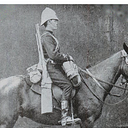Just how do you destroy Chemical weapons without making it far worse for the population.
In the recent attacks on Syrians stockpile of chemical weapons quite a few people are wondering how can they be destroyed without actualy putting people at risk from the fallout.
In the past this could actualy prove a problem. It's why in 2017 the US attacked not the actual chemical weapons themselves bit the aircraft that delivers them. Without aircraft they have to find another way to deliver the Chemical weapons on target. It's why the US fired 59 cruise missiles at Shayrat air base in Syria in retaliation for a chemical attack destroying 20% of Assad's warplanes
Last week President Trump tweeted that nice new smart missiles were on their way to Syria. Many thought that it was just Trump doing his usual bragging on twitter. What many did not know was the fact that he was actualy tweeting the truth and that brand new smart missiles had been developed to actualy destroy the Chemicals themselves and they would be used with deadly effect.
Syria is known to possess several types of chemical agents, including blister agents, mustard gas, nerve agents, and chlorine, with the last two being used the most in recent years.
Nerve agents are the most sophisticated and deadliest chemical weapons. Invisible and odorless, they work by interfering with the nervous system, causing muscles spasms, vomiting, chest pain, seizure, coma, and sometimes death. Other deadly agents, like VX, will kill victims with just a 10 milligram droplet. And Syria has them all thanks to Russia. By far chlorine gas is the most primitive It's the gas first used in World war one by the Germans. If we were living in 1914/18 we would be calling it Mustard gas, its looks yellow smells like bleach and swallow enough and your lungs fill up with fluid and you die within thirty minutes a slow horrible thirty minutes
During the 2017 attack — the reason behind the U.S. strike at Shayrat air base — Syrian helicopters dropped Sarin gas in barrel bombs, killing dozens of civilians in Douma. The agent used may have been a cocktail of chlorine and nerve agent as hospital workers reported the smell of chlorine with nerve gas symptoms.
Many of Syria’s remaining strike aircraft are now hiding in Russian air bases and wiping out the barrel-bombing helicopter fleet might not be enough to stop future chemical attacks. Some reports say the Syrian regime also uses modified artillery 107mm rockets (pictured above) filled with chlorine gas, a similar method used in WW1.
First though you have to find the chemical weapons and this is done by intelligence. Geospatial intelligence includes imagery from aircraft, drones, and satellites and even intercepting radio signals and of course units of special forces on the ground
The Pentagon’s Defense Threat Reduction Agency (DTRA) — an organization which uses science to combat WMD — has developed two “agent defeat” weapons to specifically to neutralize chemical and biological weapons without collateral damage.
The first one, known as BLU-119/B CrashPAD, was fielded during 2003 to support Operation Iraqi Freedom. This 2,000-pound Mk84 bomb comes loaded with a mix of high explosive and white phosphorus. The explosive ruptures drums or other containers while the phosphorus burns at high temperature, neutralizing the chemical agent. This was later joined by Shredder, a similar design based on a hardened bomb casing which can reach stockpiles stashed in reinforced, concrete-hardened bunkers.
But white phosphorus is also incredibly volatile, not to mention toxic
Lawrence Livermore National Laboratories have been working on a safer, more effective alternative. The material, developed by Livermore’s High Explosives Applications Facility (HEAF), is a thermite mixture of metal and metal oxide, which burns at high temperature. Homemade thermite can destroy washing machines or make a hole in a frozen lake. But HEAF researchers created thermite that burns hotter and longer than white phosphorus and produces less overpressure, so there is less risk of spreading the chemical agent.
HEAF’s biggest hurdle was turning thermite powder into a toothpaste-like texture. But the team succeeded in finding a suitable binder to create the first ever plasticized thermite.
Because thermite does not self-ignite, the mixture is spread and detonated by a high-explosive inner core. The result is a ‘persistent thermitic cloud’ to rapidly destroy chemical agents. As of 2017, the HEAF team were working on scaling up to produce and use the thermite in large quantities to be used in a successor to Shredder known as Penetrating Agent Defeat. The U.S. military’s other option is HAMMER, another thermite-based weapon. Short for “Heated and Mobile Munitions Employing Rockets”, this weapon fires “kinetic fireball incendiaries” that are essentially hollow shells of rubberized rocket fuel. The shell has a hole in it, and when the interior is ignited, exhaust shoots out through the hole, propelling five-pound ball at high speeds.
Once released, these bouncy, grapefruit-sized fireballs will spread through any confined space, filling the air with hot exhaust, raising the temperature to over 1,000 Fahrenheit, and staring secondary fires. If chemical weapons are stored in an underground complex, then a single penetrating bomb could release dozens of fireballs to take out whole facility in one strike.
These are the smart new missiles that President Trump meant when he tweeted they were coming Syria's way.
